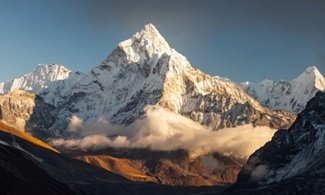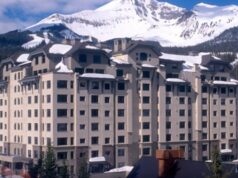 NATIONAL REPORT—For decades now, global warming has led to reduced snow coverage, especially at low and medium altitudes, threatening the main activity of ski resorts. Vail Resorts, with popular ski areas in North America, faced an 8 percent decline in visits during the 2023 to 2024 ski season due to an annual 28 percent decline in snowfall (Rachel Yalof, 2025).
NATIONAL REPORT—For decades now, global warming has led to reduced snow coverage, especially at low and medium altitudes, threatening the main activity of ski resorts. Vail Resorts, with popular ski areas in North America, faced an 8 percent decline in visits during the 2023 to 2024 ski season due to an annual 28 percent decline in snowfall (Rachel Yalof, 2025).
Nowadays, resorts are massively dependent on alpine skiing and winter tourism revenues. Therefore, shorter seasons and expensive artificial snow, are making the economic model unsustainable. In Europe, 75 percent of glaciers in the French Alps could disappear by 2050 (Stanislas Bourron (ANCT), 2024). In 25 years, even with the use of artificial snow, the season could be reduced from 14 to 33 days (optimistic scenario) and up to 62 days (pessimistic scenario) (Innsbruck University, 2024). The U.S. ski industry has already lost $5 billion between 2000 and 2019 due to climate change. If no adaptation measures are taken, the annual decline could reach $1 billion by the 2050s (Rachel Yalof, 2025).
However, snowmaking infrastructures are not a sustainable solution either, as they consume an important amount of water and energy, at a time when environmental pressures are intensifying. Indeed, winter tourism generates an enormous ecological footprint, and it is now becoming imperative to reduce this impact. In some resorts, the number of winter visitors is already on the decline, threatening both local employment and regional appeal.
Transform Ski Resorts into Year-Round Tourist Destinations
In response to the threats posed by climate change, resorts are diversifying their tourism offering by developing summer and mid-season activities such as hiking, mountain biking, accrobranching parks, spas and wellness. Additionally, sustainable and eco-responsible tourism is gaining popularity.
In addition, major investments are being made to develop infrastructures and modernize ski lifts to accommodate cyclists and hikers alike. In addition, a growing number of cultural and sporting events—such as festivals, trail competitions and mountain bike races—are being organized to attract visitors out of season.
Lastly, there has been a real shift in mindset when it comes to the environment, and a growing number of resorts are going green. For instance, the “Net Zero 2030” objective of some resorts, such as Big Sky, calls for a 50 percent reduction in carbon emissions over six years (Tessa Crowley, 2024). “The time to make crucial and immediate climate action is here,” advocates Jeremy Jones, founder of the climate-conscious nonprofit, “Protect Our Winters.”
In some countries, such as Austria, mountain tourism is growing, making up for the shorter winter seasons. According to a recent government survey, over a quarter of tourists now head to Austria during the summer only for cycling. This is a growing enthusiasm that is leading to an increase in bike sales, with over 500,000 bicycles sold in 2022, and therefore marking a 15 percent jump since 2019 (Kevin Eagan, 2024).
Transform a Region to Save Local Tourism?
To preserve their resorts, a large number of local associations and committees have been founded to structure coherent, attractive projects. Cuchara Mountain Park is a ski resort managed by its community in Colorado. After over two decades of being closed (leading to a decline in local tourism), it has been able to reopen, thanks to the community’s efforts and state subsidies, first partly in 2022, then for a full season in 2023.
Indeed, in 2016, the Cuchara Foundation raised $150,000 to purchase 50 acres of land and donate it to Huerfano County (Ken Clayton, 2024). Panadero Ski Corporation then received $250,000 from the Colorado State Outdoor Recreation Grant, helping to rehabilitate the resort (Ken Clayton, 2024). Colorado State Outdoor Recreation Grant (COSORG) is a program, supported by the U.S. Economic Development Administration State Tourism Grant, that has awarded over $3.7 million to 49 projects in 27 counties, generating 413 direct jobs and benefiting hundreds more indirectly (Colorado Office of Economic Development and International Trade, 2024).
We can agree with Eve Lieberman, Executive Director of the Colorado Office of Economic Development and International Trade, when he affirms: “When community-based recreation areas thrive, local economies do, too,” as the resort now offers affordable skiing, stimulates the local economy and promotes access to leisure activities for all.
The Queenstown Example
Since the 1950s, Queenstown has become a leading destination in adventure tourism and visitors have been drawn to its alpine landscapes ever since. So much so that, before the COVID-19 crisis, Queenstown generated 39 percent of its GDP from tourism, and it accounted for 52 percent of all employment in 2020 (Queenstown, N., 2025). Drawing over three million visitors annually, the city generated $3.1 billion in sales in 2019 (Queenstown, N., 2025).
Covid came along, and New Zealand closed its borders. The gap in business gave Queenstown the opportunity to pause and reflect on what a brighter future might hold. There has been a collective response to the crisis. After opening discussions with the community, goals were set to achieve a sustainable long-term vision. According to Mat Woods, CEO of Destination Queenstown, “Queenstown’s aim to be carbon zero by 2030 has caught the imagination of this community. Even though the decarbonization plan is only one of 23 different projects from the region’s destination management plan, it has galvanized people to look at the whole regenerative tourism plan.”
This is proof of the public’s desire to promote environmentally friendly tourism, with a strong emphasis on natural heritage and local produce. The town successfully combined public investment and private initiatives to ensure balanced tourism development, with the aim of broadening the city’s activities, encouraging the creation of a medical center, and striving to attract a wide variety of different businesses. All these developments are making Queenstown ever more attractive and boosting the economy. Today, Queenstown has become a global example of the successful transition to four-season tourism, proving that this transformation is possible.







